This week’s newsletter is The Wild Card, the topic that always allows me the greatest freedom to ruminate.
I recently traveled to Minnesota where I delivered a lecture at the History Forum for the Minnesota Historical Society. As part of my trip, I visited Saint John’s University about 90 minutes away where a longtime colleague teaches. At the college, I spoke with faculty, staff, and students. I prepared by reflecting on the values of liberal arts education and environmental citizenship—things close to my heart. I walked away thinking about generosity. Read on!
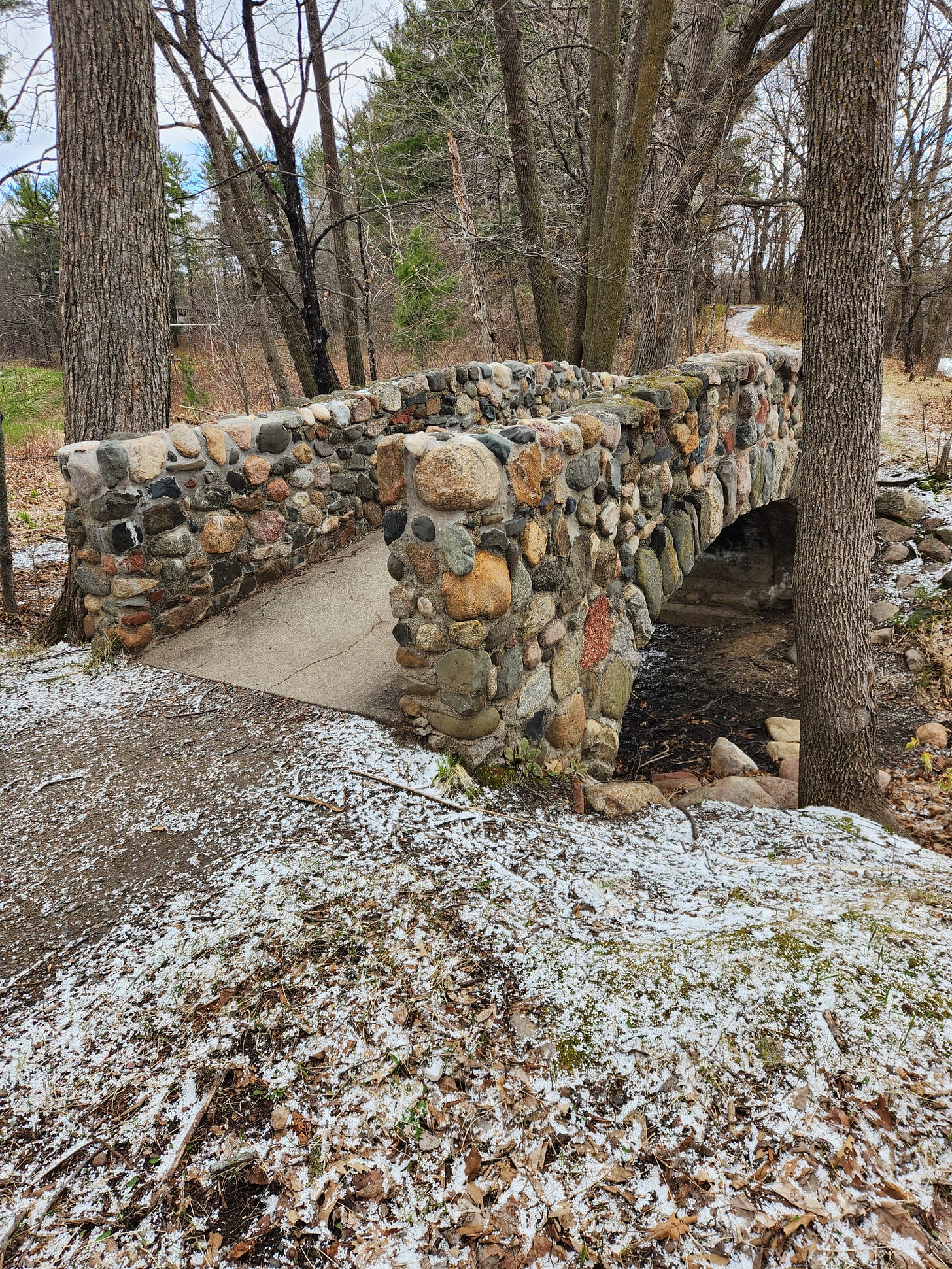
Knowing Place Deeply
By coming to know a place deeply—the overlapping ecosystems, the delicate balance among the number of creatures and available nourishment, the patterns that play themselves out year after year— . . . communities try to make decisions with an understanding of their consequences. In the event of a serious mistake, the community will be around long enough to recognize it as such.
I came across this sentence in a book I was given during my trip. It speaks directly to some key values that make intuitive sense to me as an environmental historian. For people who subscribe to bioregionalism or who believe that sense of place can guide us through better environmental relations, sticking around, staying putting, sinking roots in place all promise nurturing ways forward. Probably hundreds of the essays and books that line my shelves make this argument in one way or another. Such values find their way into my newsletter often.
However, this sentiment was unique in my collection. What is missing in that ellipsis (…) above is the word “monastic.”
That these sentiments fit so seamlessly into a broader environmental ethic I’m sympathetic to and find frequently in environmental writing surprised me, which speaks to my ignorance of this tradition.
As I spent a short time in this monastic (and academic) community, I ruminated on place, generosity, and time.
The Saint John’s Landscape
I spent a couple days at Saint John’s University. The combined campuses of Saint John’s University and College of Saint Benedict’s sit among hills in central Minnesota and have been there for quite some time. Benedictine priests moved to the area in 1856, moving a few times before settling at the current Saint John’s campus location on the shore of Lake Sagatagan.
The landscape of the campus and the surrounding countryside is subtly beautiful. For those of us who call the far West home, the Midwest can seem plain. A certain prejudice can settle in and block the view of seeing beauty in different types of forests and valuing lakes instead of steep mountains and vast deserts. And though wilderness plays an outsize role in American environmental consciousness, there is something to be said for long habitation in place.
Helping me gain some of this perspective was my host (who paid subscribers will soon learn more about), but also John Geissler who gave me the book the passage above comes from—The Nature of Saint John’s: A Guide to the Landscape and Spirituality of Saint John’s Abbey Arboretum. Once a student at Saint John’s, now John directs the campus’s Outdoor University and is the Abbey Land Manager. I could not have asked for a more enthusiastic guide.
John shared the campus with me with an eye on sustainability. He pointed out restoration projects, protected from the abundant resident deer. We stopped and eyed bluebirds, the first of the season, along with some first wildflowers, too—species that are not familiar ones where I live. We viewed the community solar project. He showed and described the sustainable logging operation in the forest, a Forest Stewardship Council-certified enterprise. And once, we parked, walked into the woods, looked up, and marveled at several great blue herons flying above their rookery. Since the birds always look prehistoric to me, these moments prompted thoughts of time scales longer than normal.
Best of all, John handed me a jar of maple syrup. This had never happened to me on a college campus before. And certainly never from trees on the campus. And most definitely never from monks who harvested it. I was told you cannot buy this syrup; it can only be gifted.
I felt this generosity keenly. It made me think more deeply about generosity generally.
Harvesting the sap from sugar maples has occurred here for thousands of years. The monks at Saint John’s University started an annual harvest in 1942 to compensate for wartime sugar shortages. Inside the syrup shack, boards are tacked to wall to track the results of the harvesting. Year after year, another board, messy and cramped, goes up.
Outside, records are shared on a sign, including historical averages. I forgot to take notes, but as of a decade ago the record was 560 gallons of syrup from 1985. The earliest day of harvest was February 26, 1999, and the latest start was April 3, 1974. These records and averages bear the mark of tradition and the sharing embodies the Benedictine way.
All these things and more that I saw and heard of are rooted in faith, a faith I do not share since I’m not even a lapsed Catholic. But they are also rooted in long-term visions. Monks came and planned to stay when they arrived in the 19th century. And when individual monks choose to come to the abbey, they are committing to live the rest of their days at Saint John’s—a profoundly countercultural commitment
A Chapel Walk
The morning I left, time was tight, but I wanted to walk in the woods despite the graupel on the ground. I headed from the Abbey Guesthouse to the lakeshore on my way to a chapel at a distance. The temperature had dropped lower than I prepared for, so I kept my walk at a brisk pace.
I had come to Saint John’s to talk about the liberal arts and environmental citizenship, relying on my own experiences and the commitments I’ve developed over decades of study. As I walked the easy trail where spring had not yet arrived—bare branches only—I pondered the type of environmental citizenship evident on these grounds, inspired by this ground.
I rounded many bends, crossed some bridges, and then arrived at Stella Maris Chapel, sitting on a tiny island, this building erected in 1915 and renovated in 1943. I had it to myself. It seemed I had the entire lake to myself it was so quiet. I stepped inside. Two empty seats invited conversation. A pregnant Mary invited compassion. A stained-glass star invited direction.
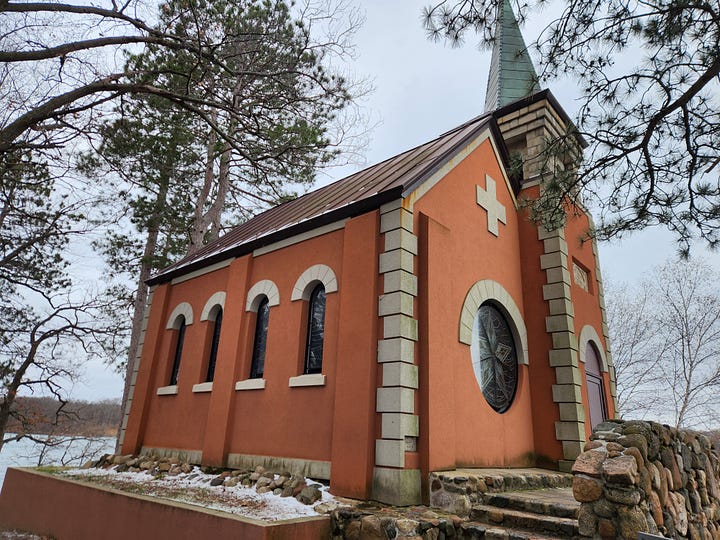
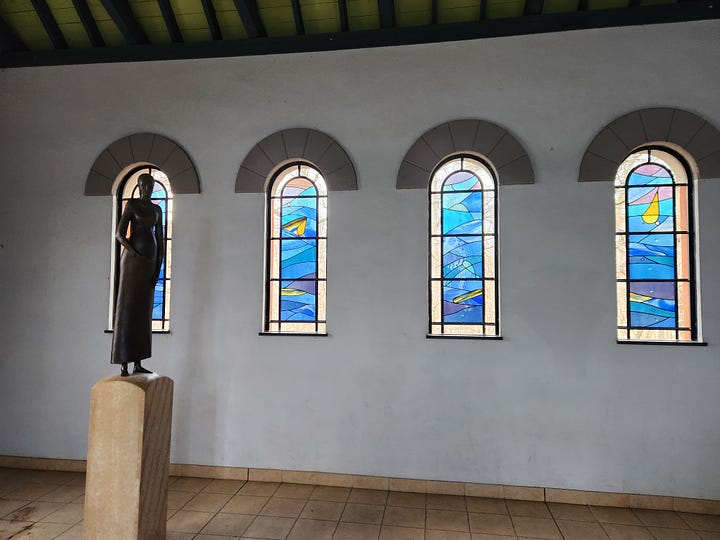
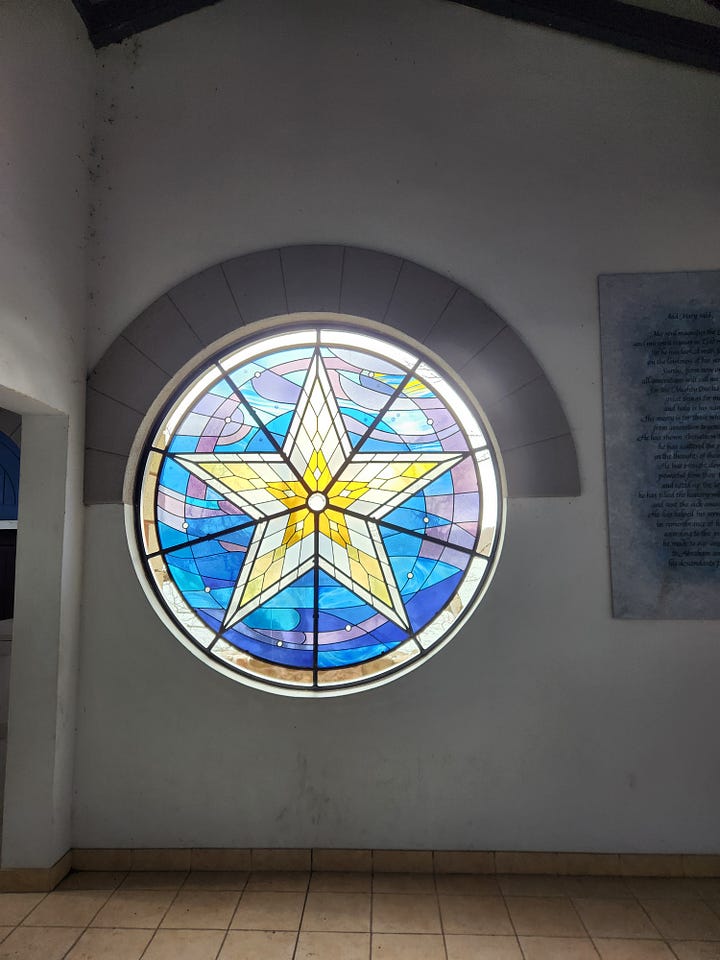
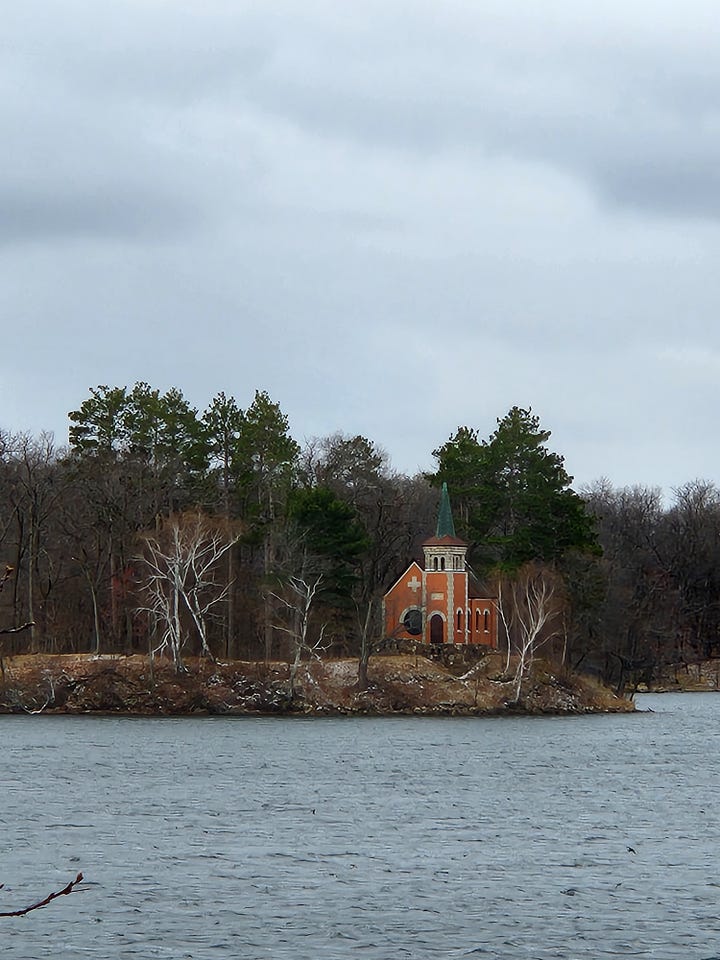
The chapel is close to the campus’ heart but sits at enough distance you have to intend to go there. I imagined students and monks taking a moment to consider the history of the place, the generosity of those who came before and decided to stay. There are worse places to contemplate historical and environmental sustainability.
Closing Words
Relevant Reruns
This past newsletter explores some different ideas about campus designs. My very first academic publication explored how religious ideas shaped John Muir’s environmental outlook.
New Writing
Somehow, a five-day trip has seriously disrupted my writing. Nothing new this week!
As always, you can find my books, and books where some of my work is included, at my Bookshop affiliate page (where, if you order, I get a small benefit).
Taking Bearings Next Week
I’ll be revisiting The Classroom next week. Stay tuned!






What a nice reflection! I'm so glad we had the opportunity to hang out together a bit, and for the change to share a bit of what St. John's (and St. Ben's) has to offer. It took me time to learn to appreciate these midwestern landscapes too, but those here are indeed very special-- in large part due to the people who cared for them historically and my friends who care for them now. Thanks for putting this all into words so thoughtfully.
A lovely sharing of your experience.